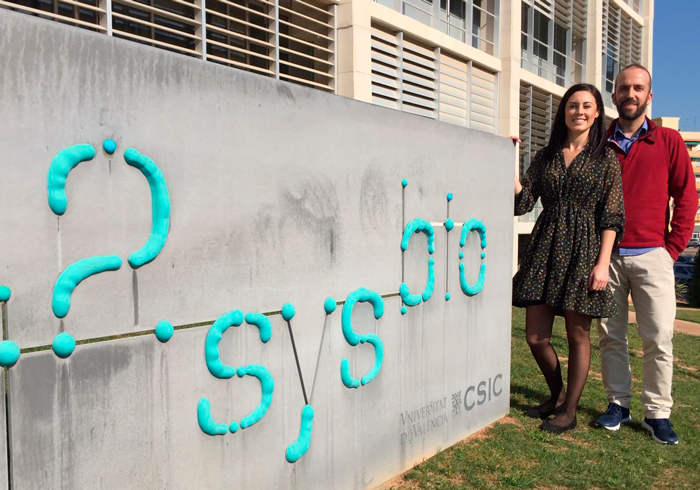Users
Social media
- More details here...
- Address
Parc Científic de la Universitat de València C/
Catedrático Agustín Escardino, 9
46980 Paterna (Valencia) Spain - Email:
iu.i2sysbio@uv.es - Phone:
(+34) 963544810
- Address
Links
Jennifer Risso-Ballester defends her doctoral thesis on the genomic instability of DNA viruses

Investigation & Education
Thesis
Jennifer Risso-Ballester defends her doctoral thesis on the genomic instability of DNA viruses

This doctoral thesis, directed by Rafael Sanjuán, evaluates the mutation rates of DNA viruses using advanced sequencing techniques and studies how viruses evade host repair mechanisms. The results of the thesis have been published in journals such as PLoS Pathogens and Viruses. The thesis was defended on October 29, 2019.
DNA viruses are very abundant, but it is usually thought that their degree of genetic diversity and adaptability is much lower than that of RNA viruses as they present lower mutation rates. However, there is very little information on the mutation rates of DNA viruses, probably because next-generation sequencing (NGS) technologies usually present error rates that are orders of magnitude higher than the mutation rates that wish to be estimated. Consequently, the only mutation rates currently available are based on the annotation of phenotypes associated with known mutations. However, recent advances in NGS, specifically a new technique called duplex sequencing (DS), improve accuracy by around four orders of magnitude compared to other conventional NGS methods.
One of the main objectives of the thesis, entitled “Regulation of the mutation rate in DNA viruses” was the study of the emergence of spontaneous mutations using DS to determine the mutation rate of our model DNA virus, human adenovirus type 5. (HAdV5). On the other hand, mutation rates in viruses depend not only on the fidelity of the polymerases used during replication but also on other factors such as the efficiency of genome repair. The cellular DNA repair system (DDR) is very efficient and is responsible for restoring both the errors that have originated during replication and the repair of damaged DNA. The development of strategies by viruses to evade these DNA repair systems would result in an increase in mutation frequency. Numerous studies have demonstrated the interaction between eukaryotic DNA viruses and the DDR. However, the possible consequences of this virus-host interaction on the virus mutation rate are unknown. Access to the DDR would justify the low mutation rates observed in DNA viruses while also explaining the differences observed between RNA and DNA viruses. To address this question, this research used experimental evolution using non-tumor cells and the use of chemical inhibitors to suppress the modulators of the main DDR pathways. The DS allowed us to evaluate the resulting genetic diversity in the virus genome.
Jennifer Risso-Ballester's doctoral thesis has been developed in the Experimental Virus Evolution group of the I2SysBio under the supervision of Rafael Sanjuán (tenured professor of Genetics at the University of Valencia). The tribunal was made up of Pilar Domingo Calap and Santiago Elena Fito (both members of I2SysBio) and F. Xavier López Labrador (FISABIO-I2SysBio Evolution and Health Joint Research Unit).


